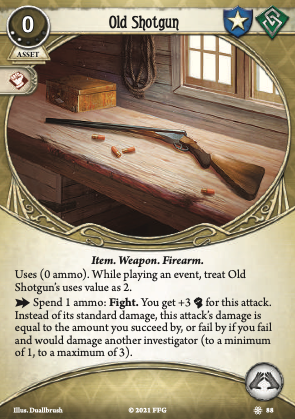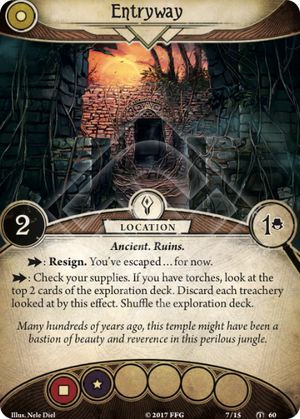
Roland is my favorite character, by far, and it's not close.
1- An incredibly fun gameplay loop of "I did a thing, so now another thing happens, and another thing, and another thing". This starts off with his initial ability to get a clue off of killing something, but thanks to cards like Glory, Runic Axe, Grete, and Evidence, this just keeps going.
2- He gets access to strong seeker cards like Empirical Evidence, Pathfinder, Shortcut, Crack the Case. Huge shout out to Crack the Case, as you will typically want to use Roland's ability at difficult-to-investigate locations, like shroud 5. Actionless resources? Huge plus, and Roland is a resource vacuum.
3- Roland does struggle with horror, sure. You are constantly two bad horror things happening to you from dying. I typically play in groups, and inevitably someone needs to come to my rescue with some horror healing. Make sure you have a plan, either someone willing to heal you or your own horror healing. Due to your hybrid role as both cluever and monster hunter, it's easier for a friend to justify taking a bit more healing than they otherwise would. Physical trauma and physical soak is much easier for Roland, I never play without taking In the Thick of It. Shout out to my homie Second Wind for making physical healing easy as a guardian. Can't wait for a particular card that's coming in Drowned City that should also help with horror.
4- As the game has matured, guardians have gotten access to more and more card draw. This means it is much easier to get your weakness before the game ends, and unlike so many other weaknesses, it stays on the board. This is incredible for subsequent cycles through your deck. And if you happen to have a monster basic weakness, all the better, we want more of those anyway. 3 clues is a lot especially at lower player counts, but the fact that this is a one-and-done weakness makes it hardly a factor at all unless you have poor card draw and pull it near the end of a scenario.
5-The game also revolves around more monsters than it ever did before. I recently played Feast of Hemlock Vale and then played Dunwitch, and the amount of monsters is not comparable. You are far more likely to have things to kill in today's gameplay.
Kill monsters, get clues, pray the mythos doesn't one shot you (or find a cutie who enjoys playing Diana Stanley and let them rescue you from Horror treacheries by spamming Ward of Protection (2). 10/10 strategy, would recommend). Have endless fun.




